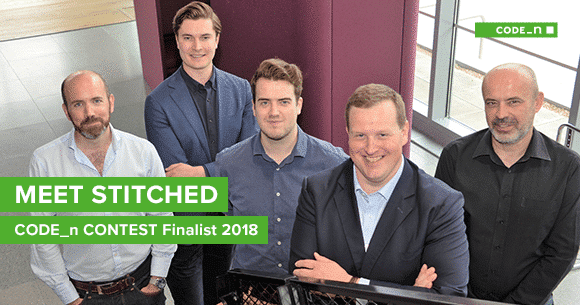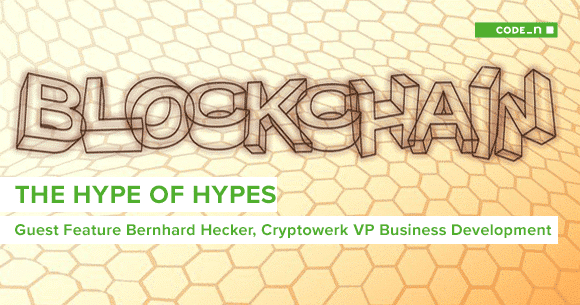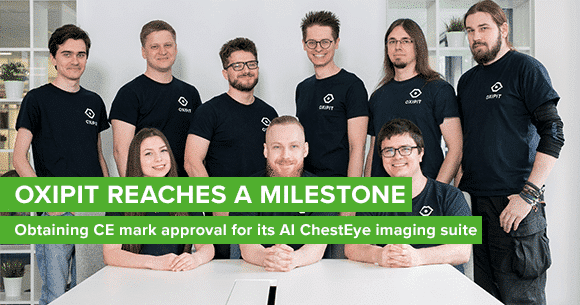MEET OUR CODE_N CONTEST FINALISTS 2018: Stitched from the United Kingdom
 We are at the juncture where we are witnessing the game-changing dynamism of AI even in human capital management. CODE_n CONTEST finalist Stitched is one of the few pioneering companies using AI, machine learning and other cutting-edge technological solutions to disrupt the traditional thinking and boundaries of HR to enhance organizations’ human capital investments. Looking for a way to deeply inspect your organization’s capabilities and gain competitive advantage? Read our interview with Nic Arnold, CEO of Stitched and join us at the new.New Festival to meet the Stitched team in person.
We are at the juncture where we are witnessing the game-changing dynamism of AI even in human capital management. CODE_n CONTEST finalist Stitched is one of the few pioneering companies using AI, machine learning and other cutting-edge technological solutions to disrupt the traditional thinking and boundaries of HR to enhance organizations’ human capital investments. Looking for a way to deeply inspect your organization’s capabilities and gain competitive advantage? Read our interview with Nic Arnold, CEO of Stitched and join us at the new.New Festival to meet the Stitched team in person.
Iulia: What is Stitched all about?
Nic: Stitched unlocks the return on company investments in human capital. It’s a talent analytics platform which uses machine learning and natural language processing to automatically and objectively map organizations’ skills and experience. We stitch together text fragments from existing documents and systems to provide a detailed capability profile of people based on the work they have done. This enables our customers to be more effective and efficient in the way they acquire and deploy talent, maximizing the returns they achieve from their investments in human capital.
Iulia: How did you come up with the idea?
Nic: Stitched started out as a need, originally based on the personal experiences of our founders who were working in a department (silo) at a big bank. They experienced first-hand how people’s skills go to waste with unnecessary hiring, misinformed firing, and excessive staff turnover. At Stitched, we realized that people leave a digital footprint in their resumes, proposal papers, working papers, and research – machine learning and natural language processing could be used to automatically build a skills repository and intelligence hub for the workforce, capturing the skills of the people (supply) and skills needed to perform the work (demand). This repository constantly learns and is always up to date.
Stitched evolved by building a skills universe through profile data in the public domain and capturing research and testing at small and large organizations. Initially this applied to those who sell capability (such as consultancies and tech service providers), but then it extended to large enterprises.
Iulia: What are you trying to solve?
Nic: We feel that the legacy approaches to workforce and talent management underutilize the value of firms’ investments in their human capital, and fail to maximize the opportunities for staff within those companies. And yet an organization’s ability to make human capital investments, whether in hiring, training or other staff development, is the key to building a successful business.
Traditional capability management involves top-down skills matrices, surveys, and project censuses. These efforts are hamstrung through poor, old, or fragmented data manually captured in ways that are not fit for purpose. This is costly and subjective, reinforcing silo thinking. This approach is simply too rigid and inaccurate for firms operating in the modern knowledge-economy.
When decisions regarding human talent are based on the wrong approaches, they result in people with in-demand skills missing out on internal job opportunities and they leave. A lack of shared visibility regarding expertise can result in underexploited opportunities to deploy human capital – for example, hiring skills at a higher cost, even though they could already be sourced from within the organization. Worse still, enterprises often reduce headcount in one area, jettisoning skills that are in strong demand in other areas. By linking up the actual skills within the workforce and connecting the work they do, a Stitched customer can immediately answer the following questions:
- What skills do I have in my organization, location by location, team by team? Which are most in demand? Which are underutilized?
- Which employees can be moved into new positions?
- What capabilities do I need to develop and where, considering work schedules now and in the future? How does this align with individual preferences in terms of development?
Iulia: You use AI to build a more effective and efficient organization. Do you support and provide your services to all kinds of industries? How do you contribute to the disruption of your field?
Nic: Stitched is about understanding and managing the skills in a large organization based on the people and the work they do, have done, and expect to do in the future. As such it is applicable to all industries. It is disruptive from a customer perspective in that it introduces the practice of managing capability and skills, rather than simply managing “headcount”. This is about hiring for the right skills, moving skills, and assigning skills to work in an agile way rather than simply counting heads.
Typically, our customers use our solution across the full spectrum of talent management, from hiring and growing talent, to business management and workforce planning across teams, services, locations, and suppliers. It’s also used for business transformation programs, for example when merging two companies or introducing a new operating model.
We’re finding that the transition – from the old thinking in terms of looking at “headcount”, to this new emphasis on the value of capabilities, and the people who have them – is disrupting human capital management across all industries. At the same time, we are witnessing a growing expectation among employees, in particular the younger “millennial” generation, who expect their employers to be working with them in this way as they build careers. This is a direct challenge to traditional ways of managing.
Iulia: Thanks a lot for the interview, Nic!
Meet Stitched at the new.New Festival 2018 this fall, in Stuttgart!





Write a comment